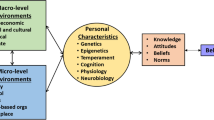Abstract
Persons who inject drugs (PWID) are at risk for adverse health outcomes as a result of their drug use, and the resulting social stigma makes this a difficult population to reach for interventions aimed at reducing morbidity and mortality. During our study of adult PWID aged ≤40 years living in San Diego during 2009 and 2010, we compared three different sampling methods: respondent-driven sampling (RDS), venue-based sampling at one syringe exchange program (SEP), and street-based outreach. We compared demographic, socioeconomic, health, and behavioral factors and tested participants for HIV, hepatitis B virus (HBV), and hepatitis C virus (HCV) and compared across the three methods. Overall, 561 (74.8%) of the targeted 750 PWID were enrolled. Venue-based convenience sampling enrolled 96% (242/250) of the targeted participants, followed closely by street-based outreach with 92% (232/250) recruited. While RDS yielded the fewest recruits, producing only 35% (87/250) of the expected participants, those recruited through RDS were more likely to be female, more racially diverse, and younger.
Similar content being viewed by others
References
Magnani R, Sabin K, Saidel T, Heckathorn D. Review of sampling hard-to-reach and hidden populations for HIV surveillance. AIDS. 2005;19(Suppl 2):S67–72.
Rudd RA, Paulozzi LJ, Bauer MJ, et al. Increases in heroin overdose deaths—28 States, 2010 to 2012. MMWR Morb Mortal Wkly Rep. 2014;63(39):849–54.
Suryaprasad AG, White JZ, Xu F, et al. Emerging epidemic of hepatitis C virus infections among young non-urban persons who inject drugs in the United States, 2006–2012. Clin Infect Dis. 2014;59(10):1411–9.
Conrad C, Bradley HM, Broz D, et al. Community outbreak of HIV infection linked to injection drug use of Oxymorphone—Indiana, 2015. MMWR Morb Mortal Wkly Rep. 2015;64(16):443–4.
Stanley MM, Guilfoyle S, Vergeront JM. Hepatitis C virus infections among young adults—rural Wisconsin, 2010. Morbid Mortal Wkly Rep MMWR. 2012;61(19):358.
Church D, Barton K, Elson F, et al. Risk factors for hepatitis C virus infections among young adults—Massachusetts, 2010. Morb Mortal Wkly Rep. 2015;60(42):1457.
Heckathorn DD. Snowball versus respondent-driven sampling. Sociol Methodol. 2011;41(1):355–66.
Heckathorn DD. Respondent-driven sampling: a new approach to the study of hidden populations. Soc Probl. 2015;44(2):174–99.
MacKellar DA, Gallagher KM, Finlayson T, et al. Surveillance of HIV risk and prevention behaviors of men who have sex with men—a national application of venue-based, time-space sampling. Public Health Rep. 2007;122(supp 1):39–47.
Muhib FB, Lin LS, Stueve A, et al. A venue-based method for sampling hard-to-reach populations. Public Health Rep. 2001;116(supp 1):216–22.
Garfein RS, Rondinelli A, Barnes RF, et al. HCV infection prevalence lower than expected among 18–40-year-old injection drug users in San Diego. CA J Urban Health. 2013;90(3):516–28.
Burt RD, Hagan H, Sabin K, Thiede H. Evaluating respondent-driven sampling in a major metropolitan area: comparing injection drug users in the 2005 Seattle area national HIV behavioral surveillance system survey with participants in the RAVEN and Kiwi studies. Ann Epidemiol. 2010;20(2):159–67.
Burt RD, Thiede H. Evaluating consistency in repeat surveys of injection drug users recruited by respondent-driven sampling in the Seattle area: results from the NHBS-IDU1 and NHBS-IDU2 surveys. Ann Epidemiol. 2012;22(5):354–63.
Burt RD, Thiede H. Assessing differences in groups randomized by recruitment chain in a respondent-driven sample of Seattle-area injection drug users. Ann Epidemiol. 2014;24(11):861–7.
McKnight C, Des Jarlais D, Bramson H, et al. Respondent-driven sampling in a study of drug users in New York City: notes from the field. J Urban Health. 2006;83(6 Suppl):i54–9.
Acknowledgements
The authors sincerely appreciate the study participants of STAHR for their contributions to this important research, as well as current and past researchers and staff. The study was supported by the Centers for Disease Control and Prevention National Center for HIV/AIDS, Viral Hepatitis, STD, and TB Prevention Cooperative agreement number 200-2007-21016. None of the authors have any conflicts of interest to report.
Author information
Authors and Affiliations
Corresponding author
Ethics declarations
CDC Disclaimer
The findings and conclusions in this report are those of the authors and do not necessarily represent the official position of the Centers for Disease Control and Prevention.
Rights and permissions
About this article
Cite this article
Collier, M.G., Garfein, R.S., Cuevas-Mota, J. et al. Comparison of Three Popular Methods for Recruiting Young Persons Who Inject Drugs for Interventional Studies. J Urban Health 94, 587–591 (2017). https://doi.org/10.1007/s11524-017-0158-x
Published:
Issue Date:
DOI: https://doi.org/10.1007/s11524-017-0158-x




